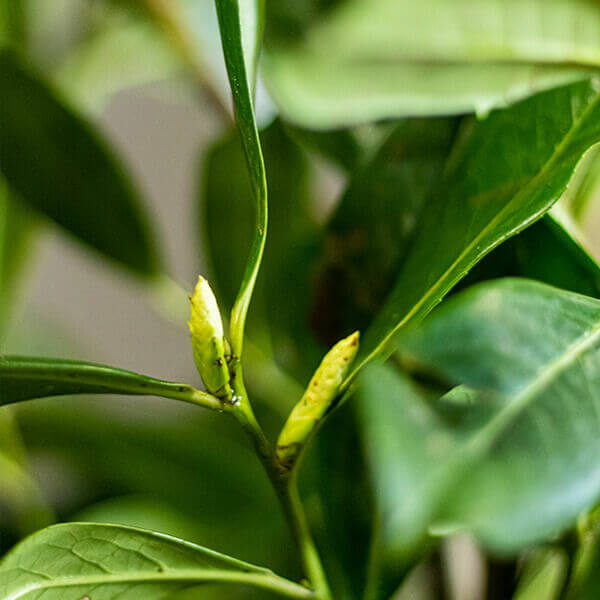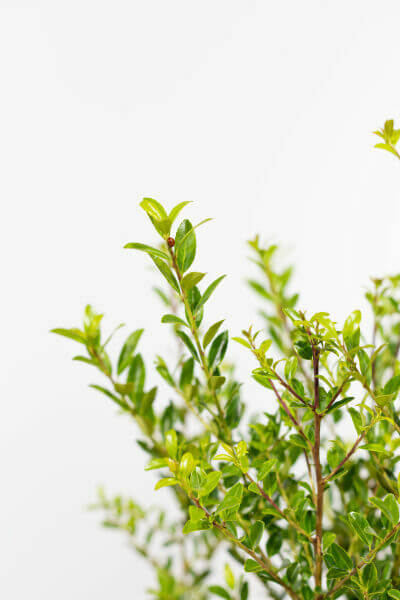Best Hedging Plants For Diverse Climates
Best Hedging Plants For Diverse Climates
Blog Article
Hedge Plants For Outdoor Layout
Enhance your garden's appeal with lush hedge ranges such as Yew (Taxus), Thuja, Laurel, Photinia, and Bamboo, commemorated for their structural integrity and environmental benefits.
Yew and Thuja provide evergreen coverage and winter season durability, while Laurel uses rapid development and broad, aromatic leaves.
Photinia adds seasonal beauty with its lively red foliage, and Bamboo lends a low-maintenance, tranquil ambiance.
These hedges improve air quality, lower noise, and produce tranquil, personal areas.
Proper planting, spacing, and upkeep guarantee energetic development and environmental consistency.
Check out how these lush varieties can elevate your garden's appeal and wellness.
Secret Takeaways
Change Your Garden With Lush Hedge Varieties
- Select Yew for its dense, evergreen growth and unequaled durability.
- Opt for Laurel for its fast growth and broad leaves, guaranteeing fast personal privacy.
- Choose Photinia for its dynamic seasonal foliage, which turns a striking dark red.
- Use Bamboo for a low-maintenance, winter-hardy hedge with visual appeal.
- Area plants 2-3 per meter and prune frequently for optimum development and health.
Popular Hedge Plants
When changing a garden with lavish hedge ranges, it's vital to think about popular hedge plants such as Yew, Thuja, Laurel, and Photinia due to their unique characteristics and benefits.
Yew (Taxus) is highly esteemed for its longevity and dense, green growth, making it a prime choice for enduring landscapes.
Thuja is kept in mind for its evergreen foliage and robust winter durability.
Photinia includes seasonal vibrancy with red leaves that darken with time, developing dynamic visual appeal.
Laurel provides rapid growth and fragrant, broad leaves, perfect for fast personal privacy.
Furthermore, Bamboo is an exceptional option for atmosphere, providing a low-maintenance, winter-hardy option that enhances the garden's visual with its classy, swaying walking canes.
These choices cater to a variety of horticultural needs and choices.
Advantages of Garden Hedges
Garden hedges offer a multitude of advantages, making them an important addition to any landscape. These natural barriers are economical to implement and supply substantial wind security, improving air circulation and contributing to sound reduction. The dense foliage of hedges like Thuja and Beech makes sure privacy by blocking exposure, creating a tranquil and remote environment.
Hedges likewise play an essential function in microclimate policy, providing a steady environment that fosters plant development and reduces temperature level fluctuations. Their detailed leaf structures filter contaminants, improving air quality and adding to a healthier garden environment.
Moreover, hedges master noise decrease, absorbing and deflecting sound waves to lower ambient sound levels. This dual performance of offering both visual and acoustic personal privacy enhances the general tranquility and visual appeal of any garden.
Planting and Maintenance Tips
For an effective hedge, meticulous preparation of the planting location is vital. Ensure the soil has appropriate pH and drain to support strong root development.
Space the plants properly for the chosen types. Water the hedge frequently during its initial development stage, adjusting as needed with seasonal modifications.
Carry out a systematic pest control and disease avoidance strategy, using organic or chemical treatments when needed. Frequently inspect for aphids, mites, and fungal infections.
Apply mulch to keep wetness and suppress weeds. Seasonal pruning promotes thick growth and air circulation, important for plant health.
Following these standards will assist you cultivate a lively, well-maintained hedge that boosts the beauty of your garden.
Spacing and Trimming Guidelines
Spacing and Trimming Standards
Correct spacing and cutting are crucial for cultivating healthy, visually appealing hedges. Adequate spacing guarantees each plant receives sufficient nutrients, light, and airflow.
Follow these guidelines for optimal hedge maintenance:
- Spacing: Position hedge plants 2-3 plants per meter to encourage robust growth.
- Pruning Methods: Regular pruning is necessary for maintaining desired hedge height and shape. Trim new growth in summer season and cut down older wood throughout winter season.
- Seasonal Care: Change trimming approaches and schedules according to seasonal requirements to make sure plant health.
- Hedge Height: Routinely screen and trim to maintain the wanted hedge height and attain consistent looks.
Following these steps will guarantee your hedge grows, improving both the appeal and functionality of your garden.
Choosing the Right Hedge
Picking the Right Hedge
Choosing the appropriate hedge includes examining elements such as fully grown height, foliage density, and environmental strength. Successful hedge plant selection needs understanding each types' growth characteristics and site-specific flexibility.
For example, Yew (Taxus) uses excellent longevity and thick growth, while Thuja is significant for its winter season resilience. Furthermore, considering upkeep requirements is crucial; fast-growing types like Laurel or Privet demand regular trimming, whereas low-maintenance alternatives like Bamboo or Ivy might be more effective for those seeking very little upkeep.
Ecological factors such as soil type, light accessibility, and wetness conditions ought to likewise direct the selection process. This mindful method makes sure the chosen hedges will prosper, providing both aesthetic and practical benefits to the garden landscape.
Shipment and Planting Guidance
To guarantee your hedge plants prosper, they should be provided by specialized carriers and planted immediately upon arrival.
Follow these essential actions for effective planting:
- Soil Preparation: Enhance the soil with raw material to improve drain and nutrient material.
- Planting Depth: Create a trench twice the width and equivalent to the depth of the root ball.
- Watering Techniques: Water thoroughly after planting, keeping the soil regularly wet but not saturated.
- Mulching: Use a layer of mulch to retain moisture and suppress weeds.
Client Assistance and Service
Offered the crucial role of timely support in horticultural pursuits, our consumer assistance group is readily available 6 days a week through telephone, e-mail, and social media to offer expert guidance and swiftly deal with any concerns. Their commitment to fast reaction times guarantees client fulfillment by solving questions related to plant health, optimum planting approaches, and upkeep schedules.

Response Time
----------------------
This thorough support system, reinforced by an outstanding 9.3/ 10 client score, highlights our commitment to improving the gardening experience for every customer.
Regularly Asked Questions
How Long Does It Take for Hedge Plants to Establish?
Hedge plants typically need one to 3 years to end up being totally established, with the exact duration varying by species and growing conditions.
Effective care during this crucial duration is necessary for robust development. Constant watering, watchful weed control, and suitable fertilizer application are critical in promoting strong root development.
For example, fast-growing types like Laurel might develop faster, while slower-growing ranges such as Yew might take longer. Diligent maintenance speeds up the facility process, resulting in dense and healthy hedges.
What Are the Best Hedge Plants for Privacy?
The concern of the finest hedge plants for personal privacy involves evaluating evergreen and deciduous alternatives.
Evergreen hedges like Thuja, Laurel, and Cypress supply year-round coverage, guaranteeing continuous privacy.
On the other hand, deciduous hedges such as Beech use seasonal personal privacy, shedding leaves in colder months.
Secret upkeep suggestions for privacy hedges consist of regular trimming, fertilizing in spring, and correct spacing-- generally 2 to 3 plants per meter.
Additionally, constant watering and persistent weed elimination are important for promoting healthy, thick growth.
Can Hedge Plants Attract Wildlife to My Garden?
Yes, hedge plants can bring in wildlife to your garden by offering necessary benefits like shelter, food, and nesting sites, consequently enhancing regional biodiversity. For example, yew, holly, and laurel are exceptional for bring in birds, while ivy supports a variety of pests.
However, it is necessary to note that there are some downsides, such as increased maintenance to handle pests and routine maintenance. Carefully choosing and maintaining hedge varieties can assist balance these disadvantages and benefits, ultimately cultivating a lively and sustainable environment in your garden.
Exist Any Flowering Hedge Plants Available?
Yes, there are flowering hedge plants readily available that can enhance the charm of your garden.
For example, Elaeagnus, likewise known as Olive Willow, produces aromatic white flowers in the fall, adding a touch of sophistication.
Photinia, another popular choice, showcases dynamic red leaves that grow into a rich green, developing a dynamic visual impact throughout the seasons.
To guarantee these plants flourish, it's vital to practice appropriate pruning techniques and seasonal maintenance, such as trimming new development in the summer season and cutting down in the winter season.
These measures will help maintain the health and aesthetic appeal of your blooming hedges.
How Do I Avoid Bugs in My Hedge Plants?
To avoid pests in hedge plants, employ natural pest control techniques and maintain appropriate hedge care. Present beneficial bugs like ladybugs, which take advantage of harmful bugs, to develop a balanced community.
Routinely examine your hedges for indications of problem and promptly eliminate any affected parts to prevent the spread. Make sure the health of your hedges by using well balanced fertilizers and supplying sufficient water.
Use mulching to keep soil moisture and proper spacing to reduce plant stress and promote robust growth. These practices jointly assist in decreasing bug problems and preserving a healthy hedge.
Conclusion
In essence, choosing the right hedge ranges such as Yew, Thuja, and Laurel can change any garden into a peaceful haven. These plants offer year-round plant, improve aesthetic appeal, and deal useful benefits like noise decrease and wind security.
Appropriate planting techniques, precise spacing, constant watering, and seasonal trimming are vital for optimum growth.
Reputable delivery services and skilled client support make sure a seamless experience from purchase to planting, making it easier than ever to raise your outside space.
Garden hedges use a wide variety of benefits, making them an important addition to any landscape. These natural barriers are affordable to carry out and offer significant wind security, enhancing Additional reading air flow and contributing to noise decrease. The dense foliage of hedges like Thuja and Beech guarantees personal privacy by obstructing visibility, producing a remote and serene environment.

Pruning Methods: Regular pruning is essential for keeping preferred hedge height and shape. Trim brand-new development in summer and cut back older wood throughout winter season.
Report this page